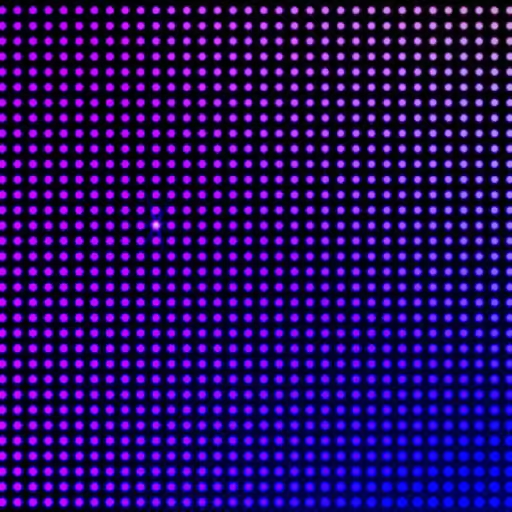Choosing the Pixel Pitch in LED Video Wall is one of the more important specifications when looking at installing an LED video wall. It determines how far a video wall can be from the closest view and also the price of the LED panels that make up the wall.
The pixel pitch, from a technical standpoint, is the distance between pixels (center to center) on an LED panel. Every LED display has a pixel pitch of some distance, even TV’s and computer monitors. Sometimes you have to get super close, or even use a magnifying glass to see the individual pixels. The closer the pixels are to each other, the crisper the image at closer distances.

A higher pixel pitch also means more pixel density, or more pixels per panel. And more pixels means more cost. For example, in an LED panel that is 500mm x 500mm (fairly standard size):
- A 5.2 mm pixel pitch LED panel will have 96 rows of 96 pixels, or 96 x 96 and have 9000 total LEDs
- A 3.9mm pixel pitch LED panel will have a 128 x 128 resolution and have over 16,000 LEDs
- A 2.9mm pixel pitch LED panel will have over 28,000 LEDs and a 168 x 168 resolution.
More pixels per panel will mean the view can be closer, but they will also cost more due to more LEDs on the panels. This is an area where more pixels do not mean a certain LED video wall is better. Is just means that people can sit closer to it.
A pretty standard resolution on a computer monitor (WUXGA) is 1920 x 1200. To replicate this on a video wall with 3.9mm pixel pitch LED panels like our EDGE 3.9, you would have a video wall that is 15 panels across by 10 high. That is actually a 1920 x 1280 resolution or 3:2 aspect ratio and a whopping 24 ft x 16ft (give or take a couple inches).
Let’s try it with a 2.9mm pixel pitch. We could go with 10 panels wide by 6 panels high and get a 1440×864 resolution which is very close to a WXGA+ or 1440 x 900 at a 16:10 aspect ratio. Or to get closer to a 1080p, we could do a 14 panel by 8 panel video wall.
Viewing Distance: The Key Factor
The closer the viewing distance, the lower the pixel pitch required.
Budget: Consider the Cost
Higher pixel pitch means higher cost. Consider whether the additional pixel density is worth the investment.
Content: Type Matters
Consider the type of content that will be displayed on the LED video wall. For example, if it's primarily text, a higher pixel pitch may be necessary for sharper images.
Installation Environment: A Key Factor
Different environments such as indoor or outdoor, brightness, sunlight, shadows, and reflections can affect viewing experience.
Expert Advice: Make an Informed Decision
Our team of experts can help you make an informed decision that will result in a better viewing experience and optimal return on investment for your LED video wall.
Optimal Return on Investment
Choosing the right pixel pitch for your LED video wall can be a daunting task. There are several factors to consider, including viewing distance, budget, content, and installation environment.
Pixel Pitch: A Key Factor
Pixel pitch is a key factor in determining the quality of the image displayed on your LED video wall.
Better Viewing Experience
Choosing the right pixel pitch will result in a better viewing experience for your audience.
